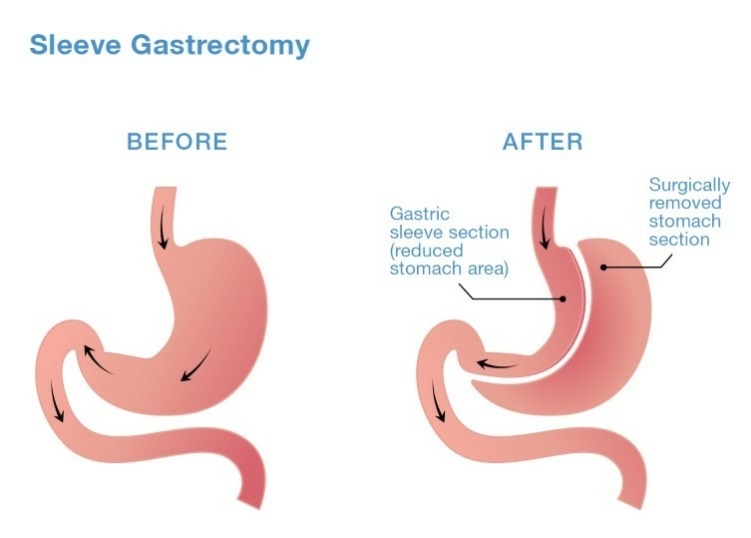Lapsurgery.com.au, Sleeve Gastrectomy Process A Surgical Solution for Weight Loss Surgery – Sleeve gastrectomy, also known as gastric sleeve surgery, is a surgical procedure designed to assist individuals in achieving significant weight loss. This process involves the removal of a large portion of the stomach, transforming it into a sleeve-like shape. Let’s delve into the key aspects of the sleeve gastrectomy process.
Preoperative Evaluation:

Before undergoing sleeve gastrectomy, patients typically undergo a thorough preoperative evaluation. This may include physical examinations, blood tests, and consultations with a multidisciplinary team, including surgeons, dietitians, and psychologists. This assessment helps ensure that the patient is a suitable candidate for the surgery and understands the lifestyle changes it entails.
Anesthesia and Incision:
During the procedure, the patient is placed under general anesthesia to ensure a pain-free experience. The surgeon then makes several small incisions in the abdomen to access the stomach.
Stomach Resection:
The key step of sleeve gastrectomy involves the removal of approximately 75–80% of the stomach. The remaining portion is stapled vertically, creating a slender tube or sleeve-like structure. This reduction in stomach size limits the amount of food it can hold, leading to a feeling of fullness with smaller meal portions.
Effect on Hormones:
Apart from the physical restriction of food intake, sleeve gastrectomy has been observed to affect hormonal regulation related to appetite and metabolism. The surgery alters gut hormones, promoting a sense of fullness and influencing insulin sensitivity.
Recovery and postoperative care:
After the surgery, patients typically spend a few days in the hospital for monitoring and recovery. The postoperative period involves adapting to dietary changes and gradually transitioning from liquid to solid foods. Patients also receive guidance on lifestyle modifications, including regular exercise and nutritional counseling.
Weight loss and health improvements:
Sleeve gastrectomy is associated with significant and sustained weight loss. Many patients also experience improvements in obesity-related conditions such as type 2 diabetes, high blood pressure, and sleep apnea. However, individual outcomes may vary.
Considerations and Risks:
While sleeve gastrectomy is generally considered safe, it’s essential to acknowledge potential risks and complications. These may include infections, bleeding, and rare instances of leaks along the stapled area. Patients should be well-informed about both the benefits and risks before deciding to undergo the surgery.
Closing
In conclusion, sleeve gastrectomy is a surgical intervention that can be a valuable tool for individuals struggling with obesity. It’s crucial for potential candidates to engage in thorough discussions with healthcare professionals, considering the comprehensive impact on their lives, both pre- and post-surgery.

